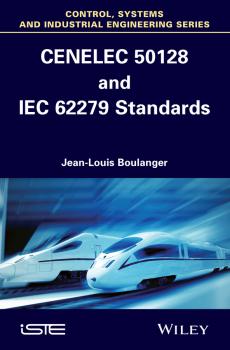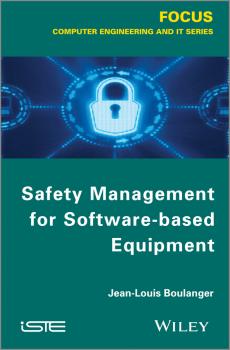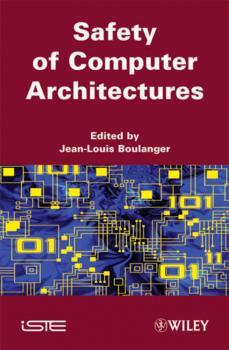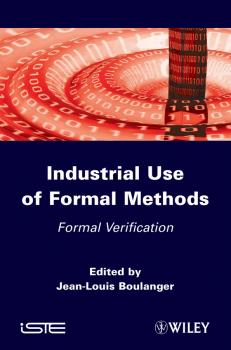ТОП просматриваемых книг сайта:
Jean-Louis Boulanger
Список книг автора Jean-Louis BoulangerАннотация
CENELEC EN 50128 and IEC 62279 standards are applicable to the performance of software in the railway sector. The 2011 version of the 50128 standard firms up the techniques and methods to be implemented. This is a guide to its implementation, in order to understand the foundations of the standard and how it impacts on the activities to be undertaken, helping towards better a preparation for the independent evaluation phase, which is mandatory.
Аннотация
A presentation of real examples of industrial uses for formal methods such as SCADE, the B-Method, ControlBuild, Matelo, etc. in various fields, such as railways, aeronautics, and the automotive industry, the purpose of this book is to present a summary of experience on the use of these “formal methods” (such as proof and model-checking) in industrial examples of complex systems. It is based on the experience of people who are currently involved in the creation and evaluation of safety critical system software. The involvement of people from within the industry allows us to avoid the usual problems of confidentiality which could arise and thus enables us to supply new useful information (photos, architecture plans, real examples, etc.).
Аннотация
A review of the principles of the safety of software-based equipment, this book begins by presenting the definition principles of safety objectives. It then moves on to show how it is possible to define a safety architecture (including redundancy, diversification, error-detection techniques) on the basis of safety objectives and how to identify objectives related to software programs. From software objectives, the authors present the different safety techniques (fault detection, redundancy and quality control). “Certifiable system” aspects are taken into account throughout the book. Contents 1. Safety Management. 2. From System to Software. 3. Certifiable Systems. 4. Risk and Safety Levels. 5. Principles of Hardware Safety. 6. Principles of Software Safety. 7. Certification. About the Authors Jean-Louis Boulanger is currently an Independent Safety Assessor (ISA) in the railway domain focusing on software elements. He is a specialist in the software engineering domain (requirement engineering, semi-formal and formal method, proof and model-checking). He also works as an expert for the French notified body CERTIFER in the field of certification of safety critical railway applications based on software (ERTMS, SCADA, automatic subway, etc.). His research interests include requirements, software verification and validation, traceability and RAMS with a special focus on SAFETY.
Formal Methods Applied to Industrial Complex Systems. Implementation of the B Method - Jean-Louis Boulanger
Аннотация
This book presents real-world examples of formal techniques in an industrial context. It covers formal methods such as SCADE and/or the B Method, in various fields such as railways, aeronautics, and the automotive industry. The purpose of this book is to present a summary of experience on the use of “formal methods” (based on formal techniques such as proof, abstract interpretation and model-checking) in industrial examples of complex systems, based on the experience of people currently involved in the creation and assessment of safety critical system software. The involvement of people from within the industry allows the authors to avoid the usual confidentiality problems which can arise and thus enables them to supply new useful information (photos, architecture plans, real examples, etc.). The authors cover the following topics: an example of use of SCADE, constraint solving in B, validation of Petri Nets-based automated rail safety, data validation, etc.
Аннотация
It is currently quite easy for students or designers/engineers to find very general books on the various aspects of safety, reliability and dependability of computer system architectures, and partial treatments of the elements that comprise an effective system architecture. It is not so easy to find a single source reference for all these aspects of system design. However, the purpose of this book is to present, in a single volume, a full description of all the constraints (including legal contexts around performance, reliability norms, etc.) and examples of architectures from various fields of application, including: railways, aeronautics, space, automobile and industrial automation. The content of the book is drawn from the experience of numerous people who are deeply immersed in the design and delivery (from conception to test and validation), safety (analysis of safety: FMEA, HA, etc.) and evaluation of critical systems. The involvement of real world industrial applications is handled in such as a way as to avoid problems of confidentiality, and thus allows for the inclusion of new, useful information (photos, architecture plans/schematics, real examples).
Аннотация
The existing literature currently available to students and researchers is very general, covering only the formal techniques of static analysis. This book presents real examples of the formal techniques called «abstract interpretation» currently being used in various industrial fields: railway, aeronautics, space, automotive, etc. The purpose of this book is to present students and researchers, in a single book, with the wealth of experience of people who are intrinsically involved in the realization and evaluation of software-based safety critical systems. As the authors are people currently working within the industry, the usual problems of confidentiality, which can occur with other books, is not an issue and so makes it possible to supply new useful information (photos, architectural plans, real examples).
Аннотация
Although formal analysis programming techniques may be quite old, the introduction of formal methods only dates from the 1980s. These techniques enable us to analyze the behavior of a software application, described in a programming language. It took until the end of the 1990s before formal methods or the B method could be implemented in industrial applications or be usable in an industrial setting. Current literature only gives students and researchers very general overviews of formal methods. The purpose of this book is to present feedback from experience on the use of “formal methods” (such as proof and model-checking) in industrial examples within the transportation domain. This book is based on the experience of people who are currently involved in the creation and evaluation of safety critical system software. The involvement of people from within the industry allows us to avoid the usual problems of confidentiality which could arise and thus enables us to supply new useful information (photos, architecture plans, real examples, etc.). Topics covered by the chapters of this book include SAET-METEOR, the B method and B tools, model-based design using Simulink, the Simulink design verifier proof tool, the implementation and applications of SCADE (Safety Critical Application Development Environment), GATeL: A V&V Platform for SCADE models and ControlBuild. Contents 1. From Classic Languages to Formal Methods, Jean-Louis Boulanger. 2. Formal Method in the Railway Sector the First Complex Application: SAET-METEOR, Jean-Louis Boulanger. 3. The B Method and B Tools, Jean-Louis Boulanger. 4. Model-Based Design Using Simulink – Modeling, Code Generation, Verification, and Validation, Mirko Conrad and Pieter J. Mosterman. 5. Proving Global Properties with the Aid of the SIMULINK DESIGN VERIFIER Proof Tool, Véronique Delebarre and Jean-Frédéric Etienne. 6. SCADE: Implementation and Applications, Jean-Louis Camus. 7. GATeL: A V&V Platform for SCADE Models, Bruno Marre, Benjamin Bianc, Patricia Mouy and Christophe Junke. 8. ControlBuild, a Development Framework for Control Engineering, Franck Corbier. 9. Conclusion, Jean-Louis Boulanger.
Аннотация
At present the literature gives students and researchers of the very general books on the formal technics. The purpose of this book is to present in a single book, a return of experience on the used of the “formal technics” (such proof and model-checking) on industrial examples for the transportation domain. This book is based on the experience of people which are completely involved in the realization and the evaluation of safety critical system software based. The implication of the industrialists allows to raise the problems of confidentiality which could appear and so allow to supply new useful information (photos, plan of architecture, real example).








